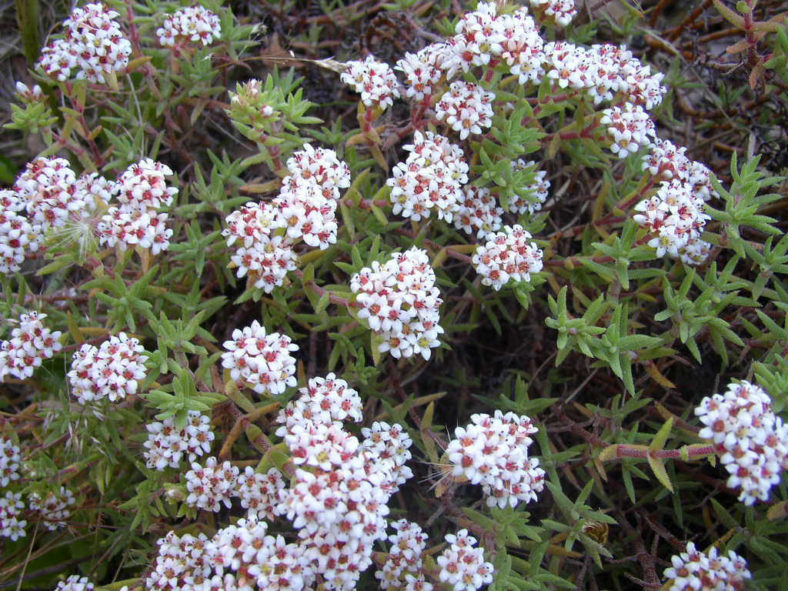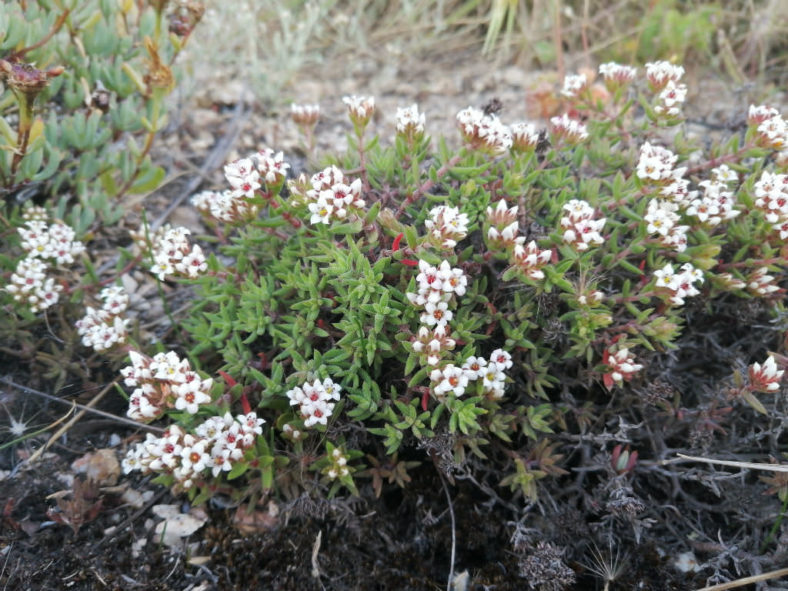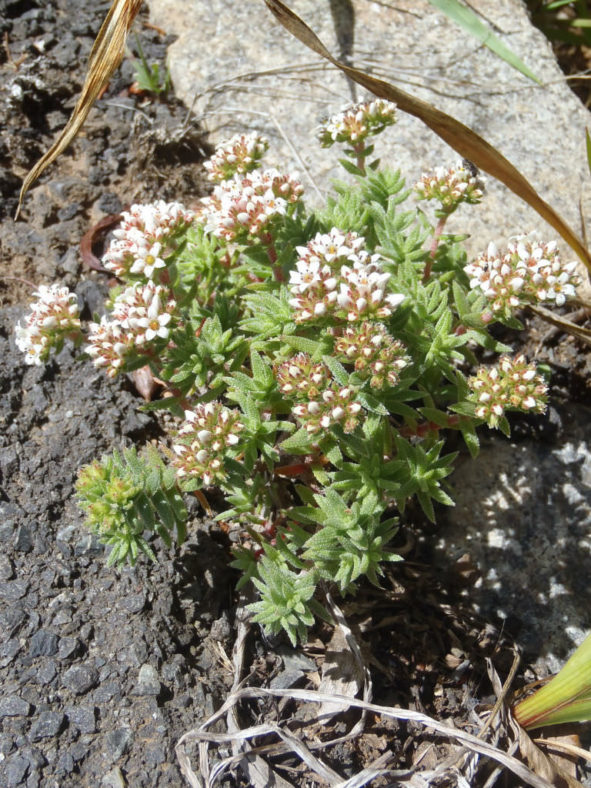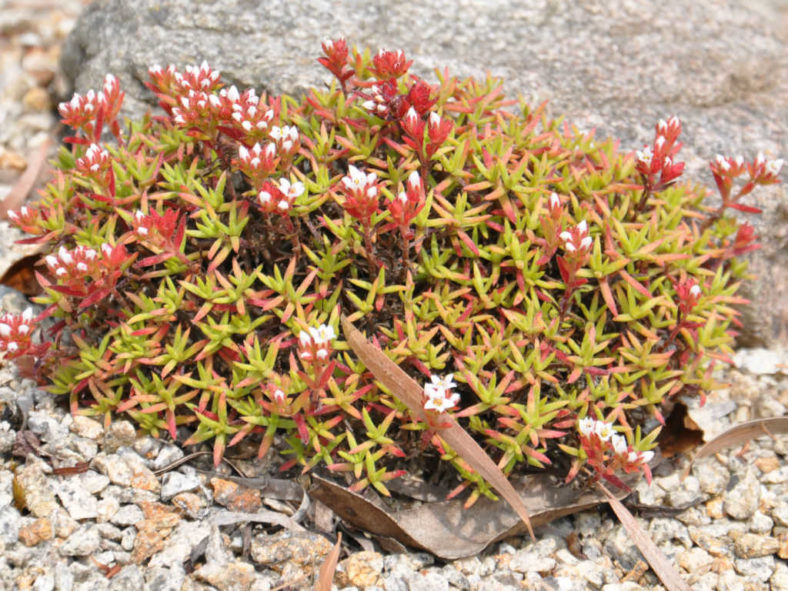Scientific Name
Crassula pruinosa L.
Synonym(s)
Crassula scabrella, Crassula squamulosa
Scientific Classification
Family: Crassulaceae
Subfamily: Crassuloideae
Genus: Crassula
Etymology
The specific epithet "pruinosa (proo-in-NO-suh)" means "frosty; frosted" and refers to the foliage of this species that has a frosted appearance.
Origin
Crassula pruinosa is native to South Africa (Western Cape).
Description
Crassula pruinosa is a small succulent shrub with thick branches and lance-shaped leaves. The branches are covered with recurved coarse hairs when young and smooth bark when old. The leaves are densely covered with appressed hairs and can grow 0.5 inches (1.2 cm) long.
The flowers are white to cream-colored, star-shaped, and appear in more or less flat-topped inflorescences in summer.

How to Grow and Care for Crassula pruinosa
Light: Crassula plants prefer full sun to partial shade. However, intense afternoon sun in the hottest period of summer can burn the leaves of the plants. Most Crassulas can be grown indoors if given enough light.
Soil: They are not particular about soil pH, but Crassulas require very porous soil with excellent drainage.
Hardiness: Crassula pruinosa can withstand temperatures as low as 20 to 50 °F (-6.7 to 10 °C), USDA hardiness zones 9a to 11b.
Watering: These plants have typical watering needs for succulents. Avoid overwatering using the "soak and dry" method, where the soil is soaked with water, slowly drained, and left to dry out before watering again. Reduce watering in winter.
Fertilizing: Crassulas will benefit from a small amount of organic fertilizer in mid-spring when they start actively growing.
Repotting: Repot as needed, preferably in spring, at the beginning of active growth.
Propagation: Crassulas are generally started by leaves or stem cuttings. They can also be grown from seeds and offsets.
Learn more at How to Grow and Care for Crassula.
Toxicity of Crassula pruinosa
Crassula plants are generally nontoxic to people and pets.
Links
- Back to genus Crassula
- Succupedia: Browse succulents by Scientific Name, Common Name, Genus, Family, USDA Hardiness Zone, Origin, or cacti by Genus
Photo Gallery
Click on a photo to see a larger version.


